-

人教版新目标初中英语八年级下册How long have you been collecting shells教案2篇
Step Ⅱ Show the new words on the screen and teach the new words. Read the new words to students and ask them to repeat.Step Ⅲ 3aThis activity introduces new vocabulary and provides reading practice using the target language.In this activity first look at the four pictures.T: What can you see in the pictures?Ss: Four snow globes.T: Right. There are four snow globes in the pictures. And what are they?Ss: They are a monster, two polar bears, two penguins and a birthday cake.Write these words on the blackboard: snow globe; monster; polar bear; penguin and birthday cake. Read them to the class and ask students to repeat each one. Make sure students understand each word.Use a computer to show the E-mail message on the screen and read the message to students.Get students to read the e-mail on their own, and then draw lines connecting each snow globe and its description.Correct the answers.AnswersA line should connect each snow globe picture with the words that describe it in the letter.Step Ⅳ 3bThis activity provides writing practice using the target language.First review Activity 2a on Page 47.Then ask students to complete the message according to Activity 2a.Some partial sentences are given to students. Write about one person's collection.When students work, walk around the room checking the progress and offering help as needed.When they finish, ask some students to read their messages to the class.

人教版新目标初中英语八年级下册Would you mind turning down the music教案
Step 4. Group work (4)1. Ask a pair of students to read the dialogue. Say, This activity provides speaking, listening and writing practice using the target language.2. Ask students to complete the work in groups.3. Check the answers with the whole class. 4. Explain some of the language points. Step 5. Word review (Self check 1)1. Ask students to read the words and the phrases given. 2. Fill in the blanks with proper forms of these words to complete the sentences. 3. Check the answers with the whole class. Homework:Do activity 2 on page 57 after class. Period 6Teaching aims: 1. Teach vocabulary words and the useful expressions. 2. Enable the students to learn etiquette in different culture. 3. Help the students learn how to behave politely in public places and in daily life. Teaching procedures:Step 1. RevisionHelp students to review the function of making requests through a free talk. Then lead them to the topic of etiquette. Explain the meaning of etiquette. Or, ask students to look it up in the dictionary. Step 2. Pre-reading (Section 1)1. Ask students to read the picture and make a list with their partner about how many rules of etiquette can be seen being broken.

人教版新目标初中英语九年级上册How do you study for a test教案2篇
内容提示本单元主要内容是学会利用verb十by/with gerund表示方式方法来讨论学习英语的策略,认识自己在学习方面的长处和不足。初步了解现在完成时的结构和用法。现在完成时由助动词have/has+动词的过去分词构成,主要表示过去发生的某一动作对现在仍有影响或造成的后果,常与already,yet,just,ever,never等副词连用。教学目标一、学习目标(Language Goal) 1. Talk about how to study . 学会讨论各种学习方法和策略。2. Find out your suitable learning methods. 找出适合自己的学习方法。 二、语言结构(Language Structures) 1. Verb + by with gerund by+动名词短语 表示“通过…途径,方法” 2. How questions have引导的特殊疑问句 三、目标语言(Target Language) 1. How do you study for tests ? 你是怎样准备考试的?Well , I study by working with my classmates. 哦,我和同学们一起学习。2. Have you ever studied with a group ? 你曾经参加过学习小组吗?Yes , I have . I’ve learned a lot that way . 是的,参加过。通过这种方式我学了许多。

人教版新目标初中英语九年级上册Where would you like to visit教案2篇
The First PeriodⅠ.Teaching Aims and DemandsKnowledge Objects(1) Key Vocabularytiring, educational, fascinating, thrilling, peaceful, exotic, trek, jungle, take it easy, explore, historic, site(2) Target LanguageWhere would you like to go on vacation?I’d like to trek through the jungle, because I like exciting vacations.2. Ability Objects(1)Train students to talk about places they would like to visit with the target language.(2)Train students to describe vacations with different adjectives.(3)Train students' listening skill.3. Moral Object,It′s more interesting to go on vacating somewhere instead of staying at home.Ⅱ. Teaching Key Points1. Key Vocabularytiring, educational, fascinating, thrilling, peaceful, exotic, trek, jungle, take it easy, explore, historic, site2. Target LanguageTalk about different places with the target language.Ⅲ. Teaching Difficult Points1. Describe vacations with different adjectives.2. Talk about different places with the target language.Ⅳ. Teaching Methods1. Teaching by illumination2. Teaching by doing chain drills3. Teaching by pairworkⅤ. Teaching Aids1. A tape recorder2. Some pictures of different places with famous views

人教版新目标初中英语九年级下册Could you please tell me where the restrooms are教案
Step Ⅰ RevisionCheck homework. Ask a few students to read the article in 3a.Then ask a few students to read their guides.Step Ⅱ Part 1Look at the words in the box. Ask a student to read them. Make sure the students understand the meaning of the words. You are to fill in the blanks with the words. In some cases, students may need to use another form of the word, for example adjusting for tense or subject/ verb agreement.Ask students to fill in the blanks on their own.Check the answers. Step ⅢPart 2Go through the instructions with the class.Look at the example with the students.Ask students what the answer would be.Ask a student to read the question and answer it.Excuse me, could you tell me where the bank is, please?The bank is across the street from the shopping malt.Get students to complete the work in pairs.Check the answers. Ask a few students to read their questions.Step Ⅳ Just for Fun!Ask all the students to read the conversation. Ask: What is funny about this cartoon? Help students to explain. A Martian is a person from the planet Mars.There is no such thing as Martian food on Earth, and the clerk looks silly because he is trying to think of where there is a Martian restaurant.Invite some pairs of students to present this conversation to the rest of the class.Step Ⅴ Summary and HomeworkIn this class, we’ve done much writing practice using the key vocabulary words and the target language presented in this unit. After class, please finish the questions in 2 in your exercise books. Then finish the exercises on pages 47~48 of the workbook as well.The Seventh Period Ⅰ Teaching Aims and Demands1. Knowledge Objects(1) Key Vocabularyimage, adventure, jealousy, hero, crime, journey, brave, no longer, show interest in, take it easy, become interested in, plain looks(2)Text:Grown-ups like cartoons, too.2. Ability Objects(1) Fast-reading to get a general idea of the text.(2) Careful-reading to get the detailed information in the text.
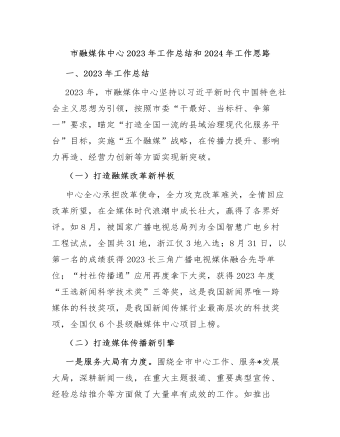
市融媒体中心2023年工作总结和2024年工作思路
二是找准新赛道,深入推进社区信息枢纽建设。要紧盯全国一流县域治理现代化服务平台目标,深化智慧广电乡村工程全国试点创建,打通技术、采编、经营力量,推动“媒体平台”向“治理平台”转变,深入推进社区信息枢纽建设。以“未来社区”为试点,充分整合基层政务服务资源、本地公共服务资源、社区治理和自治资源。以村、社区为入口,个性化呈现为体验,标签化运行为特色,打造千人千面的掌上*app。以“治理型新闻”为突破点,擦亮“新闻为民小虎队”等特色品牌,探索“新闻+治理”、“传播+治理”、“专班+治理”新模式,提高采编工作辨识度。三是拓展新产业,探索特色项目运营。探索“草坪+”运营新模式,推进17号草坪改造提升,丰富17号品牌文化内涵,将其打造成地标文化广场。推进“曙光狮”文创IP产业化进程,开发一批符合大众审美和展现、城市形象的“曙光狮”文创周边产品。加快关键核心技术攻坚,助推产品创新数字化、生产运营智能化、用户服务敏捷化,赋能城市精细化治理,进一步提升县域治理现代化水平。
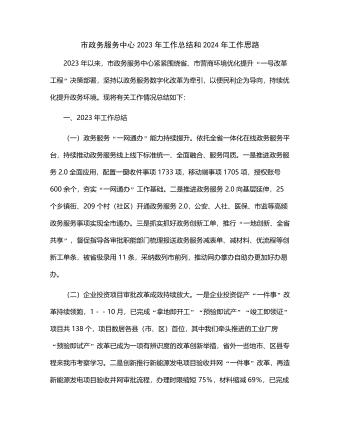
市政务服务中心2023年工作总结和2024年工作思路
(二)坚持数字赋能,推动政务服务好办易办。一是持续推进政务服务“一网通办”。以提升高质量“一网通办”率为抓手,聚焦政务创新工单采纳,指导督促相关部门加强对涉企高频事项表单、材料、流程等办理要素的研究和梳理,压实事项部门主体责任,督促部门做好向上对接,提高工单采纳率。二是持续抓好超期受理、办理件治理工作。督促重点部门落实专人盯紧审批办件系统,按期受理办理,抓好超期件整改。三是加大政务服务网办、掌办、自助办推广力度。持续推进政务大厅智慧化建设,完善24小时全天候政务自助服务,优化“瓯e办”便民服务自助终端布点,强化政务服务网办、掌办、自助办工作导引和帮办助办,推动政务服务网办掌办自助办更加好办易办。(三)突出便民利企,推动政务服务体系建设。深化市乡村三级便民服务体系建设,持续优化“15分钟政务服务圈”,推动政务服务更便捷。
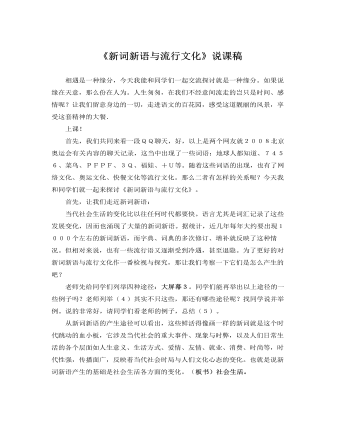
人教版高中语文必修1《新词新语与流行文化》说课稿
当代社会生活的变化比以往任何时代都要快。语言尤其是词汇记录了这些发展变化,因而也涌现了大量的新词新语。据统计,近几年每年大约要出现1000个左右的新词新语,而字典、词典的多次修订、增补就反映了这种情况。但相对来说,也有一些流行语又逐渐受到冷遇,甚至退隐。为了更好的对新词新语与流行文化作一番检视与探究,那让我们考察一下它们是怎么产生的吧?老师先给同学们列举四种途径:大屏幕3。同学们能再举出以上途径的一些例子吗?老师列举(4)其实不只这些,那还有哪些途径呢?找同学说并举例。说的非常好,请同学们看老师的例子,总结(5)。从新词新语的产生途径可以看出,这些鲜活得像画一样的新词就是这个时代跳动的血小板,它涉及当代社会的重大事件、现象与时弊,以及人们日常生活的各个层面如人生意义、生活方式、爱情、友情、就业、消费、时尚等,时代性强,传播面广,反映着当代社会时局与人们文化心态的变化。
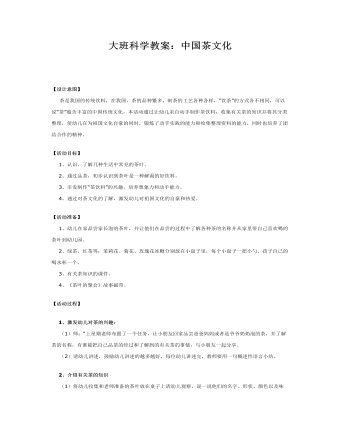
大班科学教案:中国茶文化
【活动目标】 1、认识,了解几种生活中常见的茶叶。 2、通过品茶,初步认识到茶叶是一种解渴的好饮料。 3、引发制作“茶饮料”的兴趣,培养想象力和动手能力。 4、通过对茶文化的了解,激发幼儿对祖国文化的自豪和热爱。【活动准备】 1、幼儿在家品尝家长泡的茶叶,并让他们在品尝的过程中了解各种茶的名称并从家里带自己喜欢喝的茶叶到幼儿园。 2、绿茶、红茶等:茉莉花、菊花、玫瑰花冰糖分别放在小盘子里,每个小盘子一把小勺、孩子自己的喝水杯一个。 3、有关茶知识的课件。 4、《茶叶的聚会》故事磁带。【活动过程】 1、激发幼儿对茶的兴趣: (1)师:“上星期老师布置了一个任务,让小朋友回家品尝爸爸妈妈或者是爷爷奶奶泡的茶,并了解茶的名称,有谁能把自己品茶的经过和了解到的有关茶的事情,与小朋友一起分享。 (2)请幼儿讲述,鼓励幼儿讲述的越多越好,每位幼儿讲述完,教师要用一句概述性语言小结。
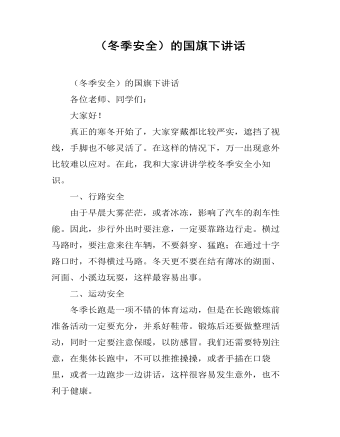
(冬季运动)国旗下讲话:挥洒汗水,收获健康
凛冽的寒冬气息已弥漫我们周围,万物将进入最为怠倦的时刻,我们的意志似乎也受到了蚕食。然而上周的趣味运动会让我们的欢声笑语萦绕在七中万达的上空,一张张笑脸点缀着落日的帷幕,给我们带来了温暖。冷气因热血沸腾而消融,校园因为我们的运动而生机盎然!运动是美好的,它强健我们的体魄,磨练我们的意志,培养集体主义精神,增强精力,增添活力。运动是必需的,有人说:“一个人的一生在画一个圆”,圆有大,有小,生命有长,有短,为了无数个美好的明天,我们要运动!不要把它当成一种任务,把它当做一种好习惯。
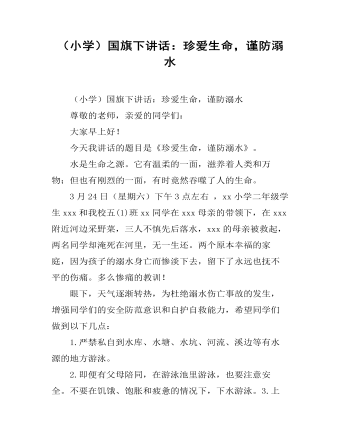
(小学)国旗下讲话:珍爱生命,谨防溺水
尊敬的老师,亲爱的同学们: 大家早上好!今天我讲话的题目是《珍爱生命,谨防溺水》。水是生命之源。它有温柔的一面,滋养着人类和万物;但也有刚烈的一面,有时竟然吞噬了人的生命。3月24日(星期六)下午3点左右 ,xx小学二年级学生xxx和我校五(1)班xx同学在xxx母亲的带领下,在xxx附近河边采野菜,三人不慎先后落水,xxx的母亲被救起,两名同学却淹死在河里,无一生还。两个原本幸福的家庭,因为孩子的溺水身亡而惨淡下去,留下了永远也抚不平的伤痛。多么惨痛的教训!
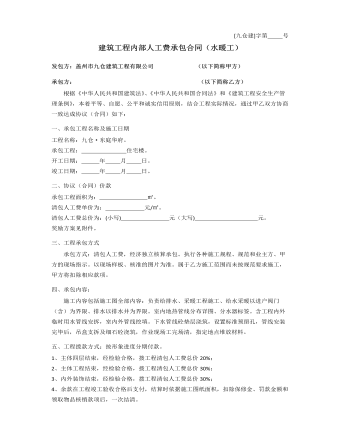
建筑工程内部人工费承包合同(水暖工)
根据《中华人民共和国建筑法》、《中华人民共和国合同法》和《建筑工程安全生产管理条例》,本着平等、自愿、公平和诚实信用原则,结合工程实际情况,通过甲乙双方协商一致达成协议(合同)如下:一、承包工程名称及施工日期工程名称:九仓·东庭华府。承包工程: 住宅楼。开工日期: 年 月 日。竣工日期: 年 月 日。二、协议(合同)价款承包工程面积为: ㎡。清包人工费单价为: 元/㎡。清包人工费总价为:(小写) 元(大写) 元。奖励方案见附件。三、工程承包方式承包方式:清包人工费,经济独立核算承包。执行各种施工规程、规范和业主方、甲方的现场指示。以现场样板、核准的图片为准。属于乙方施工范围而未按规范要求施工,甲方将扣除相应款项。
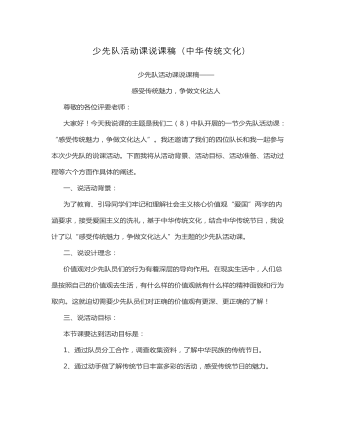
少先队活动课说课稿(中华传统文化)
尊敬的各位评委老师:大家好!今天我说课的主题是我们二(8)中队开展的一节少先队活动课:“感受传统魅力,争做文化达人”。我还邀请了我们的四位队长和我一起参与本次少先队的说课活动。下面我将从活动背景、活动目标、活动准备、活动过程等六个方面作具体的阐述。一、说活动背景:为了教育、引导同学们牢记和理解社会主义核心价值观“爱国”两字的内涵要求,接受爱国主义的洗礼,基于中华传统文化,结合中华传统节日,我设计了以“感受传统魅力,争做文化达人”为主题的少先队活动课。二、说设计理念:价值观对少先队员们的行为有着深层的导向作用。在现实生活中,人们总是按照自己的价值观去生活,有什么样的价值观就有什么样的精神面貌和行为取向。这就迫切需要少先队员们对正确的价值观有更深、更正确的了解!三、说活动目标:本节课要达到活动目标是:1、通过队员分工合作,调查收集资料,了解中华民族的传统节日。2、通过动手做了解传统节日丰富多彩的活动,感受传统节日的魅力。3、基于传统文化小达人的评比,激发队员们对传统节日的热爱,增强对传统节日的亲近感。教学重点是引导队员们通过合作互动了解中华传统节日,培养爱国意识。难点是让队员对“爱国”这一抽象的价值观内化成感性的认知。四、说活动准备:辅导员:少先队员是少先队活动课的主体,因此本堂课前作为辅导员,在本堂课前主要准备收集各项资料,制作相关教案课件,起到引导作用。队员们则分成四支小队在准备期通过自主合作进行了充分的准备,并在课堂中做了精彩的展示。
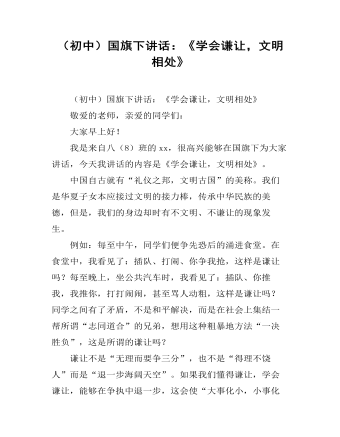
(初中)国旗下讲话:《学会谦让,文明相处》
中国自古就有“礼仪之邦,文明古国”的美称。我们是华夏子女本应接过文明的接力棒,传承中华民族的美德,但是,我们的身边却时有不文明、不谦让的现象发生。例如:每至中午,同学们便争先恐后的涌进食堂。在食堂中,我看见了:插队、打闹、你争我抢,这样是谦让吗?每至晚上,坐公共汽车时,我看见了:插队、你推我,我推你,打打闹闹,甚至骂人动粗,这样是谦让吗?同学之间有了矛盾,不是和平解决,而是在社会上集结一帮所谓“志同道合”的兄弟,想用这种粗暴地方法“一决胜负”,这是所谓的谦让吗?
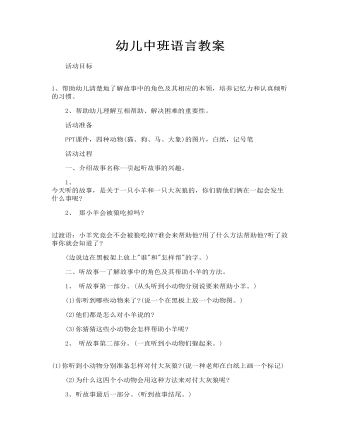
幼儿中班语言教案
一、介绍故事名称--引起听故事的兴趣。 1、 今天听的故事,是关于一只小羊和一只大灰狼的,你们猜他们俩在一起会发生什么事呢? 2、 那小羊会被狼吃掉吗? 过渡语:小羊究竟会不会被狼吃掉?谁会来帮助他?用了什么方法帮助他?听了故事你就会知道了? (边说边在黑板架上放上"谁"和"怎样帮"的字。)

初中英语说课教案
(二) 教学目标 依据并结合新课程标准提出的基础教育阶段英语课程的总体目标和具体要求,我将本课教学目标设计如下: 知识目标: 让学生掌握其中的重要词汇mind, turn down, not at all等和句式would you mind doing sth? 并能让学生掌握如何运用所学句式提出礼貌请求以及礼貌的向他人道歉。
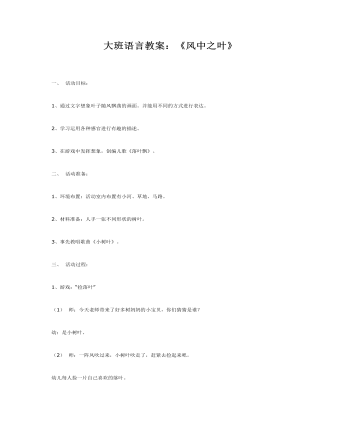
大班语言教案:《风中之叶》
2、学习运用各种感官进行有趣的描述。3、在游戏中发挥想象,创编儿歌《落叶飘》。二、 活动准备:1、环境布置:活动室内布置有小河、草地、马路。2、材料准备:人手一张不同形状的树叶。3、事先教唱歌曲《小树叶》。三、 活动过程:1、游戏:“捡落叶”(1) 师:今天老师带来了好多树妈妈的小宝贝,你们猜猜是谁?幼:是小树叶。(2) 师:一阵风吹过来,小树叶吹走了,赶紧去捡起来吧。幼儿每人捡一片自己喜欢的落叶。(3) 请幼儿描述一下自己的落叶长得什么样?并用形体动作表现出叶子的造型。(长长的、宽宽的、尖尖的、圆圆的、破一个洞的------)
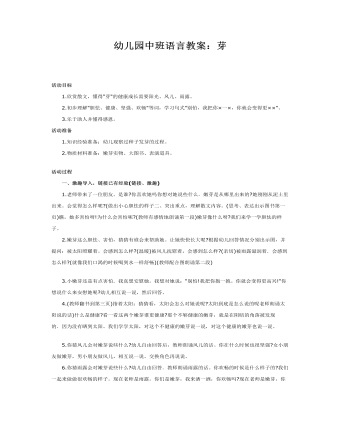
幼儿园中班语言教案:芽
2.初步理解"胆怯、健康、坚强、欢畅"等词,学习句式"别怕,我把你×一×,你就会变得更××"。3.乐于助人并懂得感恩。活动准备1.知识经验准备:幼儿观察过种子发芽的过程。2.物质材料准备:嫩芽实物、大图书、表演道具。活动过程 一、激趣导入,链接已有经验(链接、激趣)1.老师带来了一位朋友。是谁?你喜欢她吗你想对她说些什么.嫩芽是从哪里出来的?她刚刚从泥土里出来。会觉得怎么样呢?(做出小心胆怯的样子二、突出重点,理解散文内容。(思考、表达出示图书第一页)瞧,她多害怕呀!为什么会害怕呢?(教师有感情地朗诵第一段)嫩芽像什么呀?我们来学一学胆怯的样子。2.嫩芽这么胆怯、害怕,猜猜有谁会来帮助她。让她快快长大呢?根据幼儿回答情况分别出示图,并提问:被太阳照耀着。会感到怎么样?(温暖)被风儿抚慰着,会感到怎么样?(亲切)被雨露滋润着.会感到怎么样?(就像我们口渴的时候喝到水一样舒畅)(教师配合图朗诵第二段)
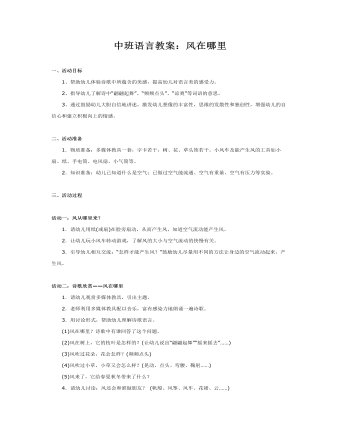
中班语言教案:风在哪里
二、活动准备1.物质准备:多媒体教具一套,字卡若干,树、花、草头饰若干。小风车及能产生风的工具如小扇、纸、手电筒、电风扇、小气筒等。2.知识准备:幼儿已知道什么是空气;已做过空气能流通、空气有重量、空气有压力等实验。 三、活动过程 活动一:风从哪里来?1.请幼儿用纸(或扇)在脸旁扇动,从而产生风,知道空气流动能产生风。2.让幼儿玩小风车转动游戏,了解风的大小与空气流动的快慢有关。3.引导幼儿相互交流:“怎样才能产生风?”鼓励幼儿尽量用不同的方法让身边的空气流动起来,产生风。
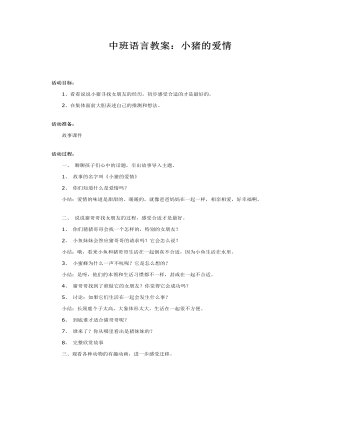
中班语言教案:小猪的爱情
活动准备: 故事课件活动过程: 一、聊聊孩子们心中的话题,引出故事导入主题。1、故事的名字叫《小猪的爱情》2、你们知道什么是爱情吗? 小结:爱情的味道是甜甜的、暖暖的,就像爸爸妈妈在一起一样,相亲相爱,好幸福啊。 二、说说猪哥哥找女朋友的过程,感受合适才是最好。1、你们猜猪哥哥会找一个怎样的,特别的女朋友?2、小鱼妹妹会答应猪哥哥的请求吗?它会怎么说? 小结:哦,看来小鱼和猪哥哥生活在一起倒真不合适,因为小鱼生活在水里。



